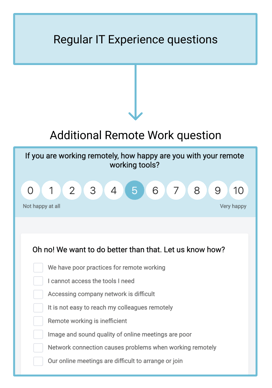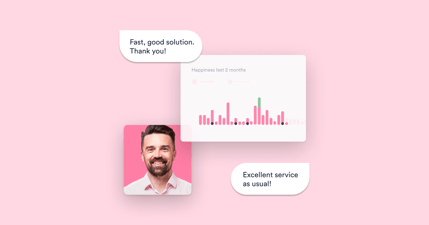Some people have always worked at the office with a desktop computer and have not given a second thought to remote working. This can be problematic as “Sam from the next cubicle” is no longer there to help. Your IT Service Desk may come up with questions like:
- I just got this new laptop, how can I use my mouse?
- Why aren’t my e-mails updated, I am already online (aren’t I)?
- My login to Skype is not working, what to do?
- What is a VPN?
The potential of remote working to drive efficiency and reduce office costs has been used by many industries lately. Global events are causing organisations now more than ever to look at remote working, but it cannot just be seamlessly ‘switched on’ for everyone.
New challenges to employees, more pressure on Service Desk
It is obvious that the sudden shift to remote working can put a new kind of challenge on employees. And it most likely puts the people providing support services in a new situation. As a person responsible for IT (services) in your company, you may find yourself asking:
- What area of our IT causes the most support tickets?
- How do I know what services people are most unhappy with? Are all locations working equally well?
- Where are people losing most time?
- Are our remote meetings working well for all employees, including our Service Desk agents?
- In essence, with resources stretched, what should I focus on to maximise our support to the business?
The biggest challenges may occur in providing Service Desk services, but you should also understand the effects on IT in general:
- Do you have enough laptops available for those who have never had to use one before?
- Are there headsets available to everyone in need?
- How about security, identity and access management?
- Are your networks, licenses and applications prepared for the increased remote use?
HappySignals helps customers to cope with the situation
 On 17.3.2020, HappySignals launched a new feature: Remote Work Experience*. This feature was activated free-of-charge for 1/4 of our customers during the first hours of availability — they can instantly start analyzing how their employees feel about remote working.
On 17.3.2020, HappySignals launched a new feature: Remote Work Experience*. This feature was activated free-of-charge for 1/4 of our customers during the first hours of availability — they can instantly start analyzing how their employees feel about remote working.
The Remote Work Experience feature helps our customers find focus on where to improve and find a way to solve the biggest issues they are facing with IT (support) during the most challenging periods. After all, it is the employees who have the best knowledge of where things are working, and what needs to be improved.
“Seeing” the feelings, gathering the insights and having the data to support prioritisation decisions gives our customers a solid basis for the development of remote working tools and culture shift in long term.
Remote working is a powerful tool that can transform an organisation’s cost base and efficiency. Helping employees and managers move to this model, happily and efficiently, is key.
* The Remote Work Experience feature is an addition to the HappySignals Employee Experience Platform, which provides all types of organizations with the ability to gather feedback data on all IT Support issues, analyse it quickly, understand what is performing well, and where there is a clear and obvious case for change in process, technology, support agent allocation or training.






